HERE WE ARE
It was Iona that introduced me to Austin after our initial meeting at the Angel. He was sat next door in his convenience store situated at the corner of Waterloo road, lit-up by a warm glow from an electric heater. Another black male hunched himself over the customer side of the counter, eyes fixated on whatever was in front of him seemingly locked into thought.
Space raiders, bottles of pop and confectionery occupied the shelves. Opposite, were seats, stools, a TV and potted plants in the window. The room seemed to hold the weight of a 1000 years. A museum of sorts. A place shut off from the world outside. Not your usual convenience store, but one with a warmth, kindness and trust. A place bound by family, friends and regulars. This was Austins store, his business, his lifeblood. A place with its own pace, free from the faster moving world outside.
Iona helped to unfold Austin’s past, his unique story, and with consent, I started to make some photographs.Weeks later, ‘Here we are’ grew from a bond between a small group of individuals that came to this little corner of Cobridge weekly to learn about photography’s relationship to storytelling. We photographed sentimental and found objects, each other and also the landscape we were a part of, however fleeting.
The project grew with time, a collaborative act of resistance. A wall against the intentions of a few strangers in the aftermath of a planned march through a fringe community that exists in one of the most deprived areas of the country.
‘Here we are’ is a celebration of the people of Cobridge and it’s rooted history. A parcel of hope in the face of adversity.

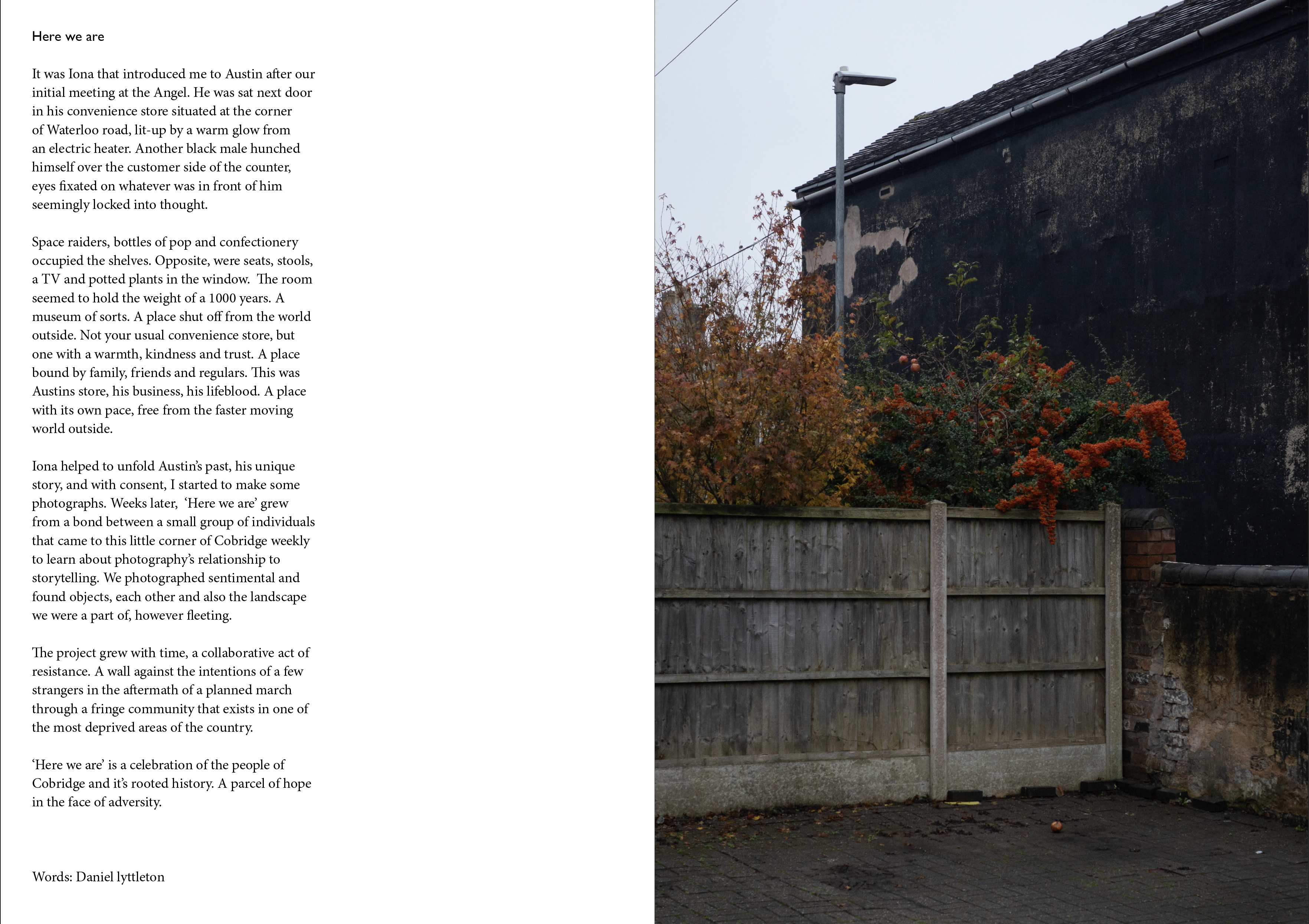
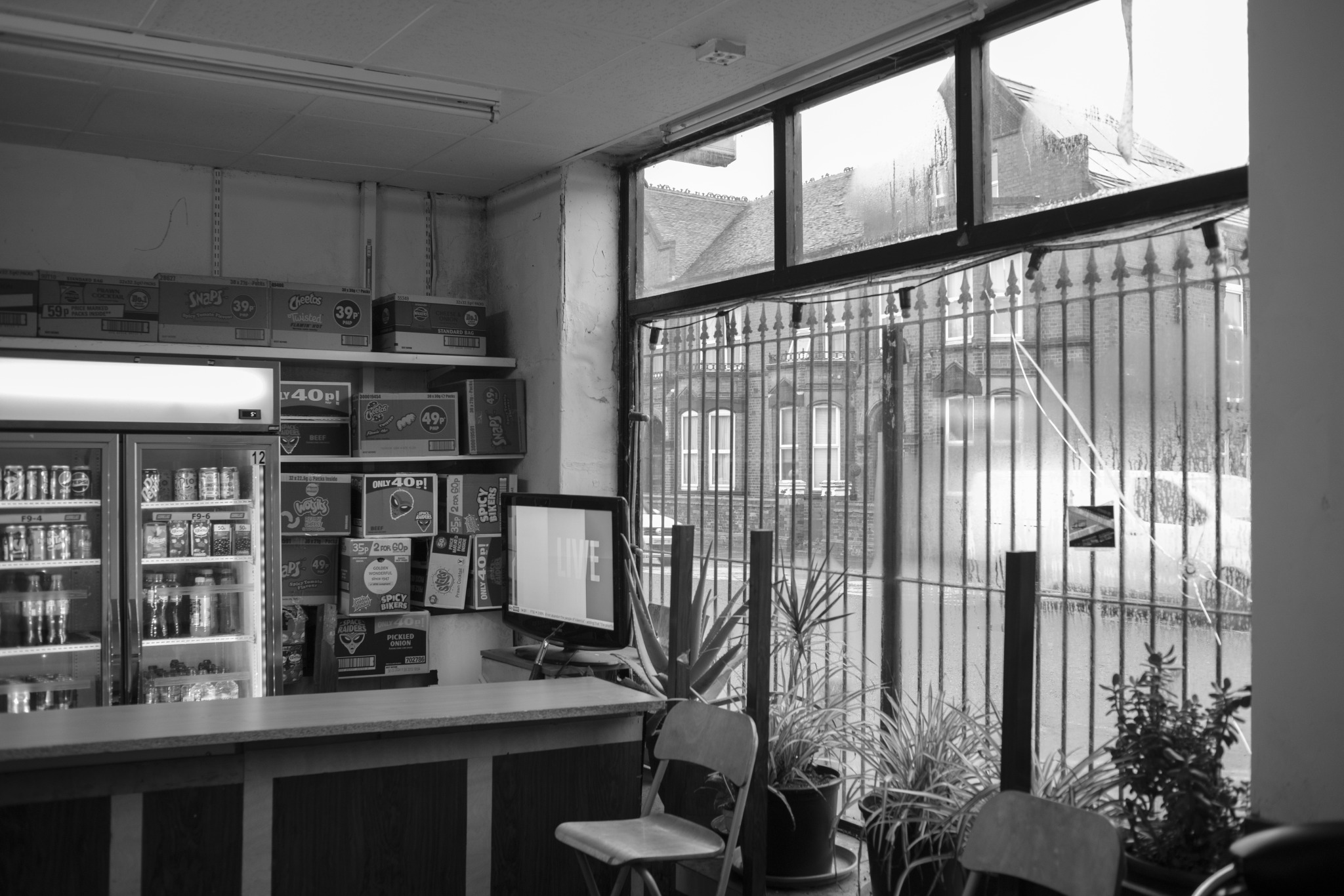
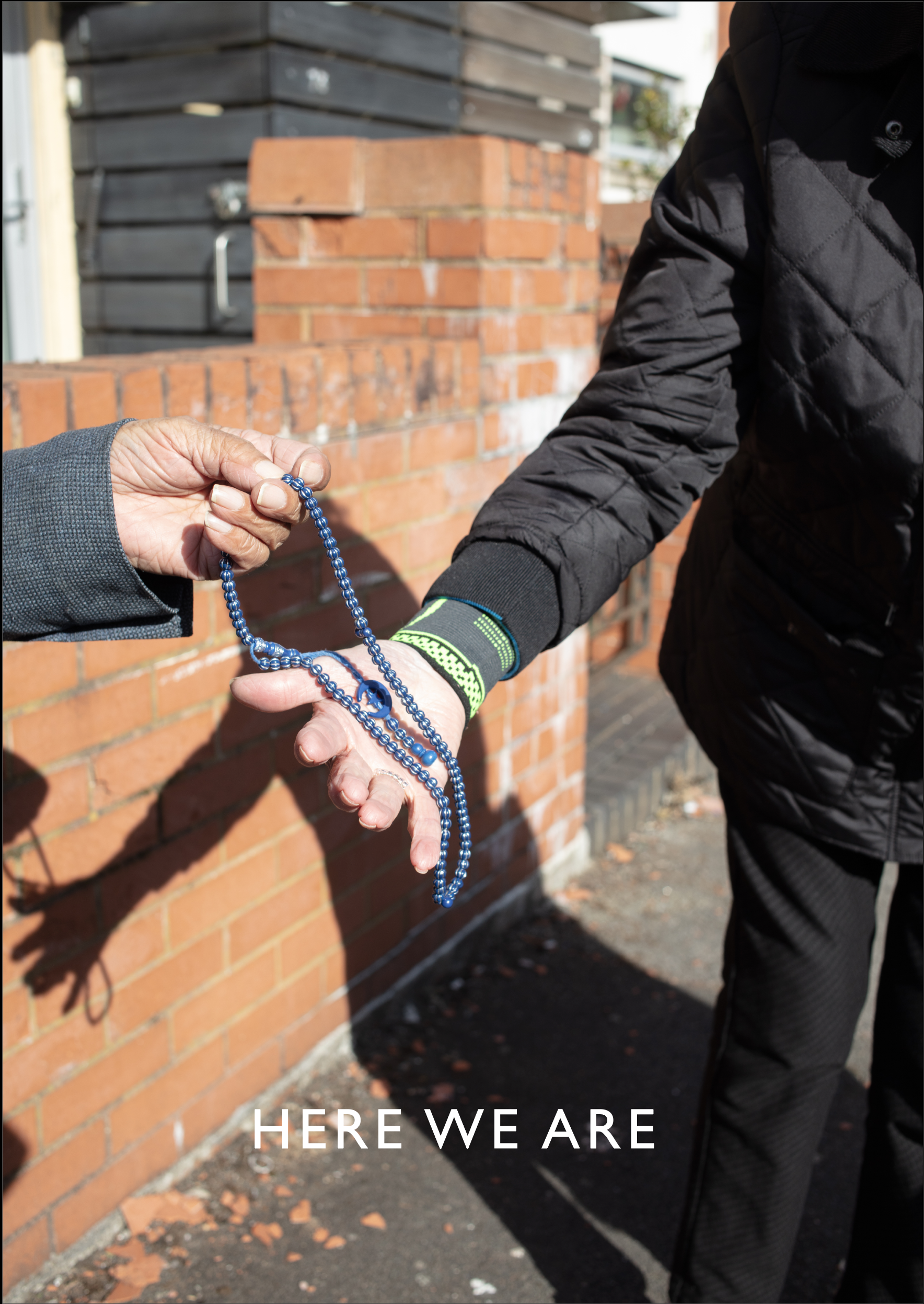

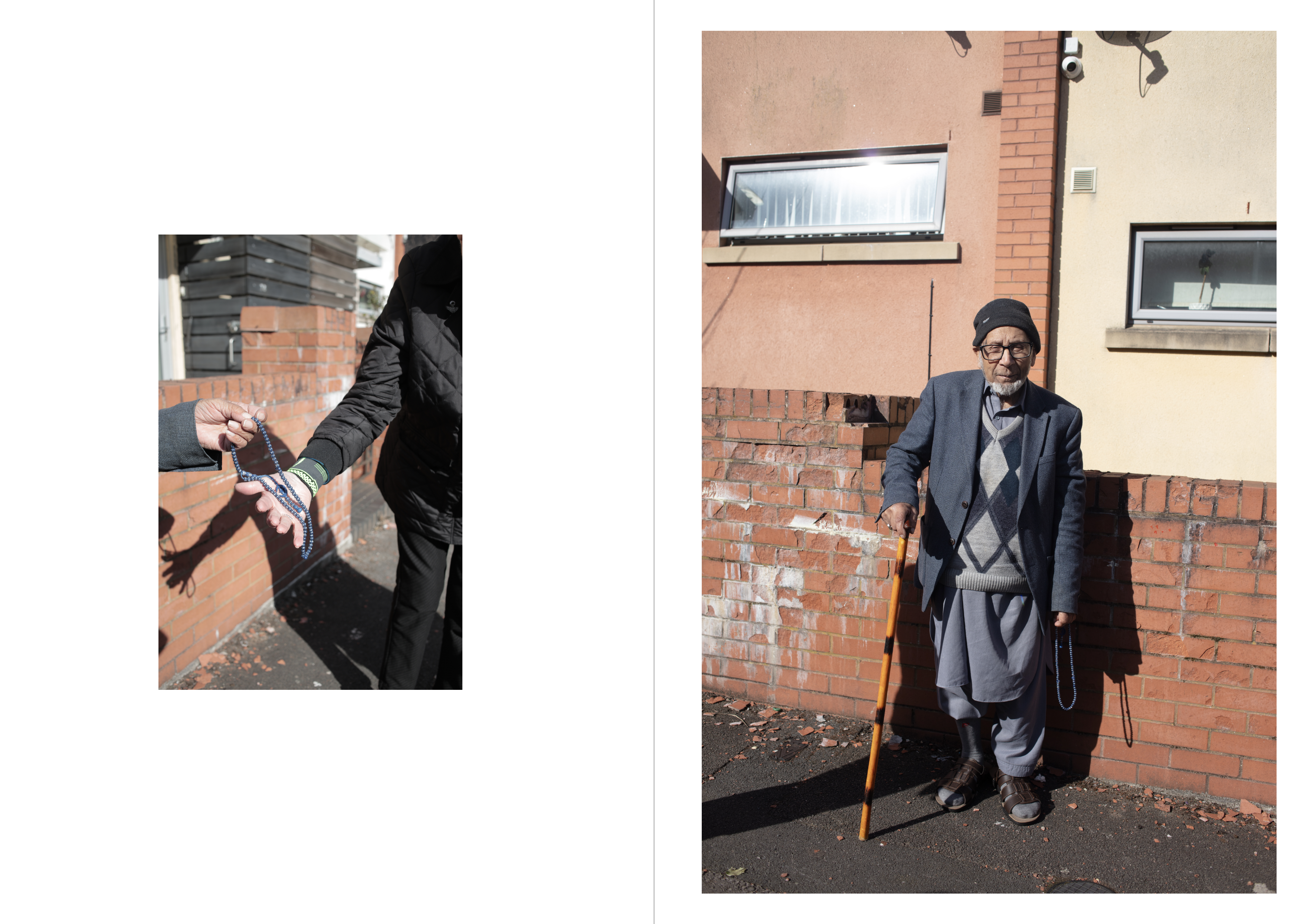
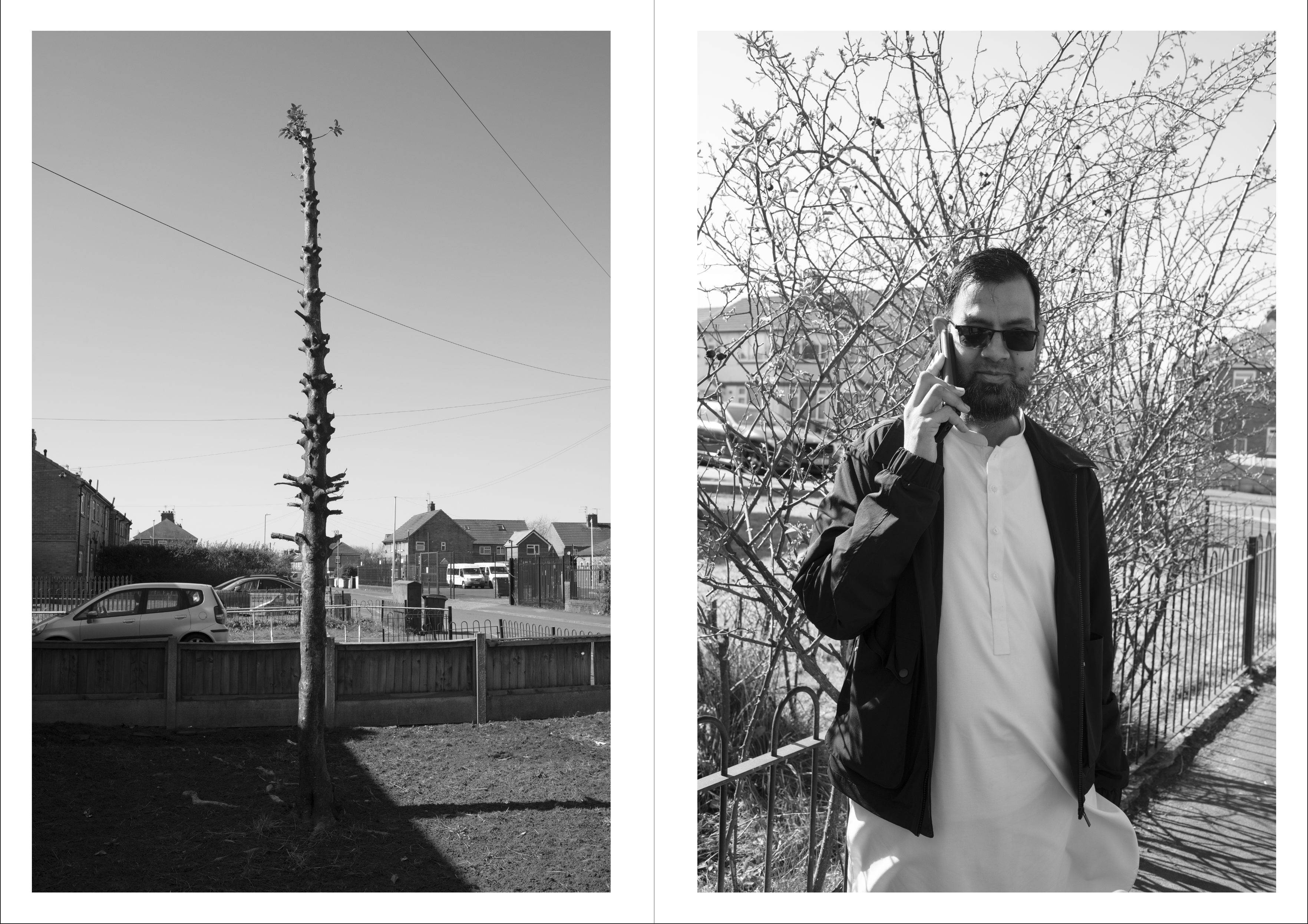
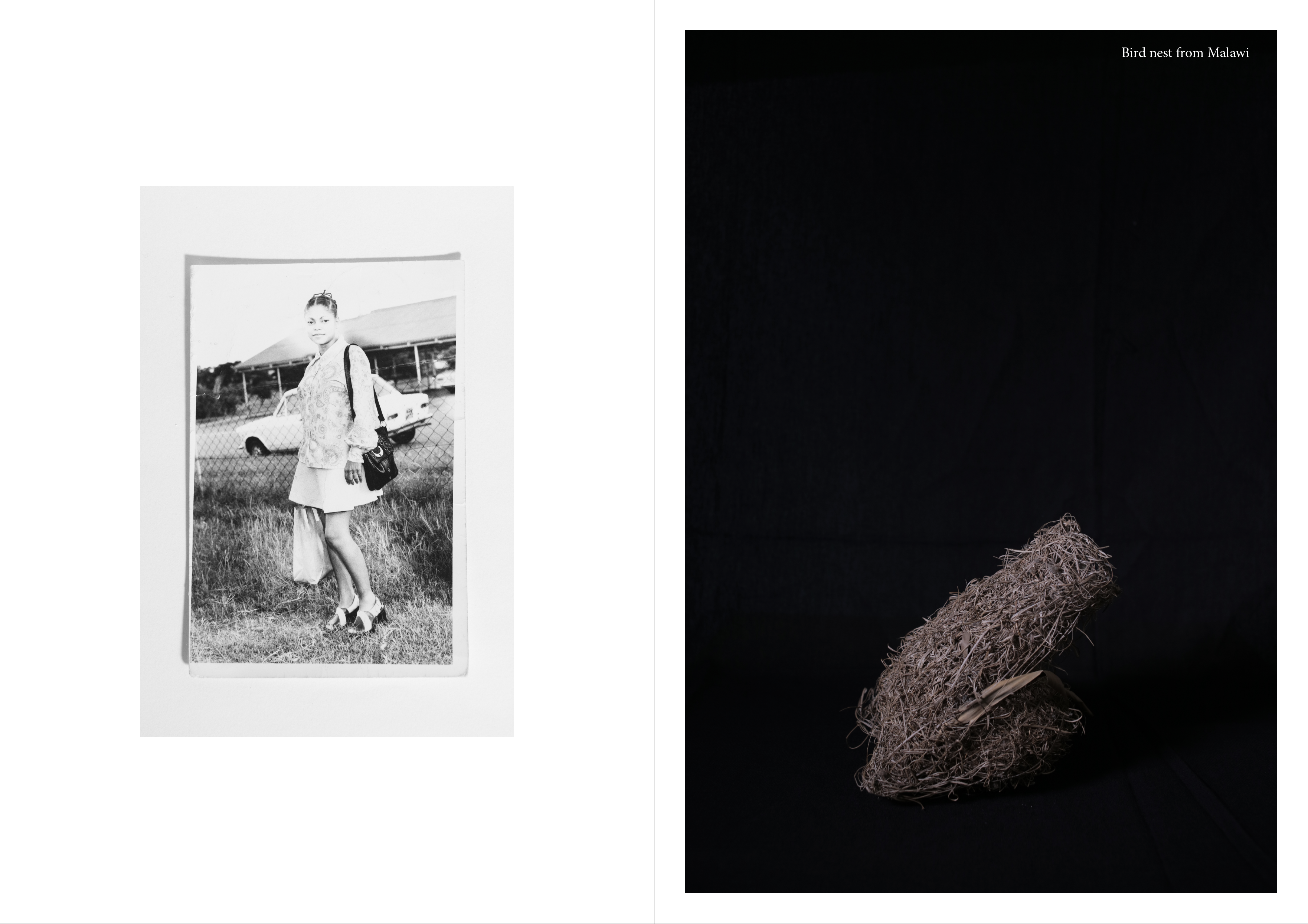


Trent
The Trent is a major river, the third largest in England, but here, in its infancy, it moves silently and unseen as it travels through the complicated conurbation of a city that bares its name; a journey largely untold.
This illogical route, moving south then north, provides adventure as it clambers through, over and sometimes under the landscape. Etymologically, the word Trent means to ‘wander’ or ‘travel’, but words mean little unless attached to experience. The photographs in this book, are a record of my experience, the river, the often austere landscape it navigates. This is nature, local nature, unremarkable and perhaps undefinable.
Trent is a place, but also not, transcendent as it moves regardless through the temporal moment of whatever it means to be present. The river is joy, hope too, defiant in its permanence and resilient in spirit. A place to hold on to, and perhaps a reminder to keep going.
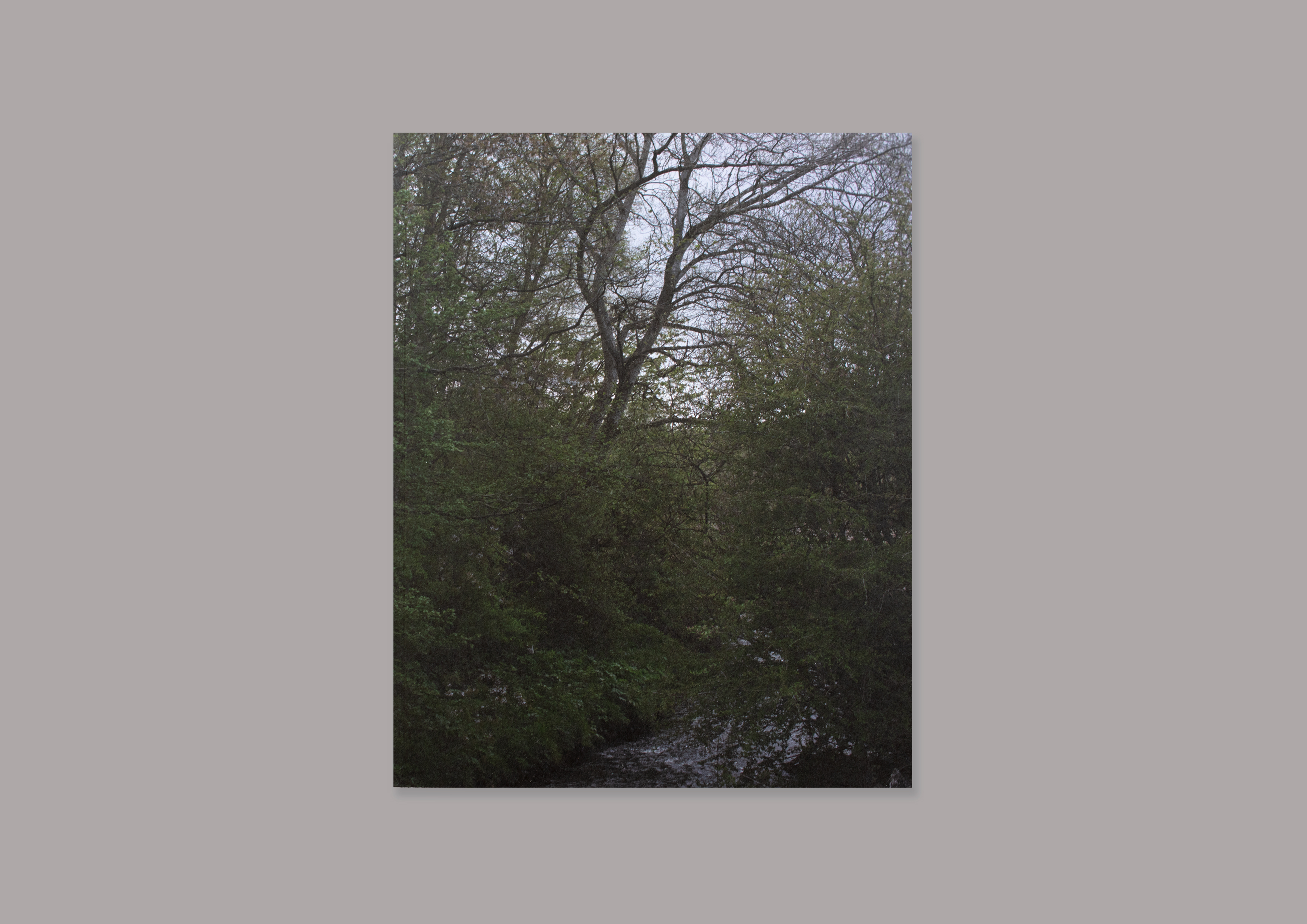
Spoil Heap
When I was young, I didn’t know the history of these conical green spaces which stood on what seemed the edge of my little world. They were a locus to get lost and escape the regimentation of school and home, a place to go with friends to climb trees, play man-hunt in the summer, catch crickets in jars, look for bird eggs, and sledge in the winter snow.
A spoil heap is the aftermath of mining, a monument of past industry, but today the heap is an unwritten place with an indifferent natural order from the urban towns it helps to glue together, a reclamation of land independent of any human agency.
I enjoy the miraculous ability to continuously renew itself where I am drawn back again and again. This is not countryside in the traditional sense, instead a site of unofficial nature that exists in the backdrop of routine for most, but one that harbours true locality, one of hope and crisis.

TELLING STORIES, BURSLEM 2019
Ian Mood - artist
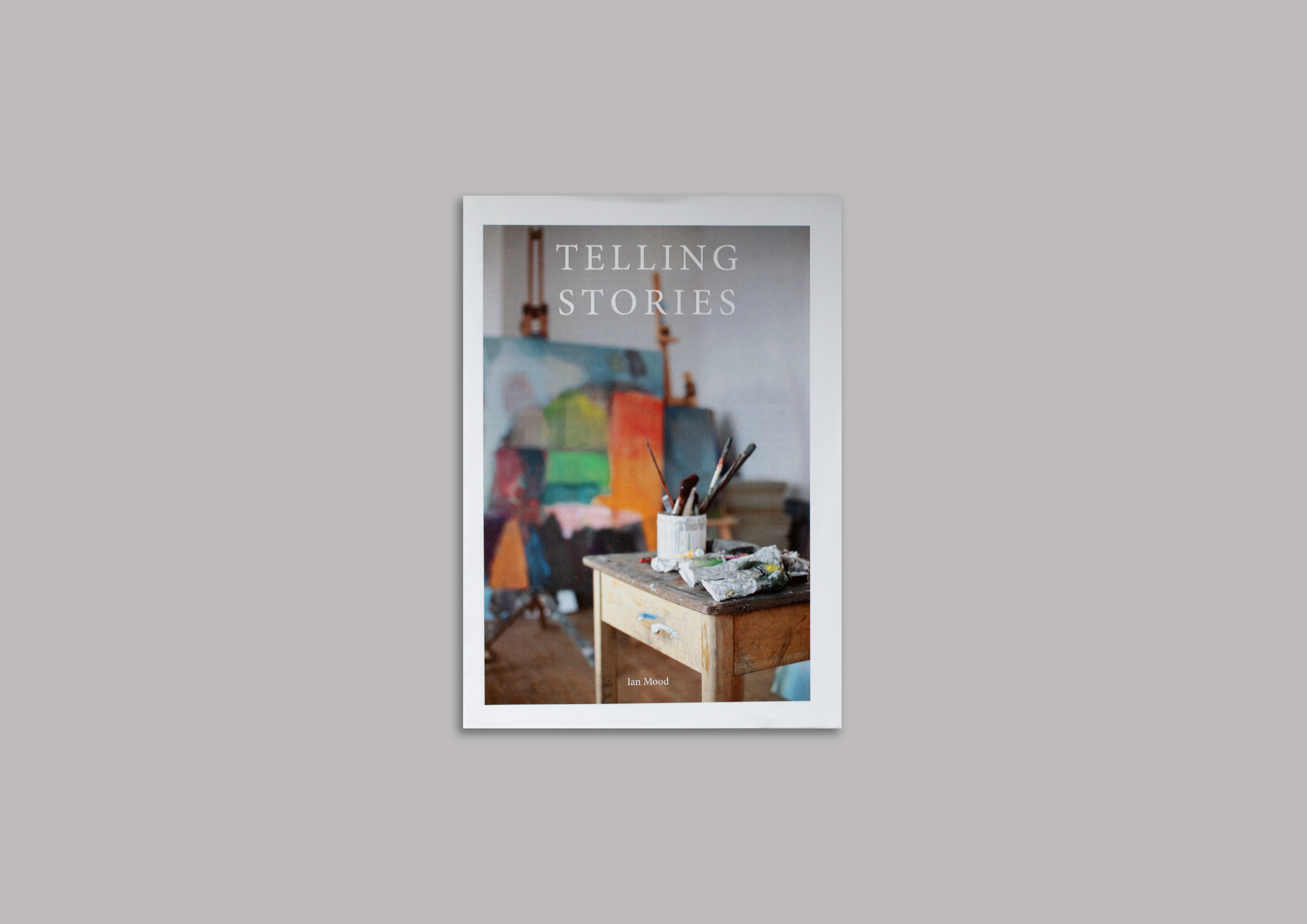

Recovery notes
I placed the mug down on the bed after taking a sip, lifting it again which left a ring with a slight stain. The sound of the bin lorry in the distance echoed through the morning like a dying monster.
‘ FANTASTIC DAD ‘
Two words I’d gotten accustomed to reading these last few weeks. Each reading promoted guilt and frustration at an inability to contribute much to the usual Dad role. In bed, exhausted, after another night of pain and discomfort.
I can’t do much.
Leg break. Two words also. You don’t really understand the implications of such a thing. One minute you’re active, the next, not. Two weeks in hospital. Two operations. One to put the bones back in place, the other to pin and plate fractured tib, fib and knee. A colossal injury for a charity football match. One that will take time to recover from. Life-changing were the first words I heard after the cat scan. Words I couldn’t fully digest at the time. But now, now I understand them.
4 weeks and a day after my second operation, and Im hobbling about on crutches. I move around. Mostly to get to the toilet and back. The fortnightly visit to physio is a welcome trip. I get to the garden in the afternoon to intake some much needed vitamin D. I sit and watch the garden.
I relive that moment more than I should. The bend. The cracks. The snapping sound that the lads thought was my shin pad. Full of regret. But it’s gone, and I need to look forward. It’s slow though. Slow progress.
Process notes.
I give myself to the world like I usually do. The totality of the information before my very being. I like to see things for what they are. Layers upon layers of often useless information. Some things prompt a response of course and I lift the machine to my eye and compose a photograph. That single sound of the shutter, an anchor in real time, a moment of truth. The day of the morning is Sunday, but days are not important as they bleed into each others, unchallenged. I walk alone down streets I know little. A stranger perhaps, but a resident of a city I was born and still live, bound by family past and present.
The odd figure or bird breaking the stillness. I think when I walk, all thinkers walk. Times with Nan and Grandad, where I sat, throwing coins into fountains in the tontine building as my Grandad would sit, sip his tea and smoke cigarettes. There are no coins in fountains now, no fountains either.
I don’t know what this searching is for. But, I enjoy moving through the world. I feel alive against the slow death of industry and the false promises of yesterday. Poverty and desperation are palpable at every turn. The acceptance of failure and who we should be - and - the world our children should grow.
These are thoughtswhen walking where most are nursing hangovers, rushing to get the children ready for football or still in someone’s kitchen chasing the last buzz at dawn.
However painful, I am alive. I witness the last dance of a city as it gives in to what comes its way. Relics of industry and pride in a museum without walls. Words fail me like they always do, but words mean little unless attached to experience. I choose experience. The world, myself and the plane of truth between us. Photographs render this experience in a way worlds fail. Pictures fail too of course but they are the closest thing to reality. A stillness. A moment of quiet contemplation against the noise beyond. It’s a simple procedure and one with experience, requires little skill. But simple things are always the most difficult and photography is no different.
However dead this place, the past is always present. I move through the city like the unseen river. A witness to my own presence and the full thickness of the world before me.
18.05.25
Small art, love and beauty.
George Orwell said that real patriotism is about making something better. Beyond his writing, he was a keen gardener and purveyor of immediate nature. He planted roses in his home on the isle of Jura, where he penned his best work. Those roses still bloom today.
My younger self never paid much attention to the small things. I was preoccupied with being a polemic artist. Of course, I was focused on pointing out the things I didn’t like. I wanted change and still do. With time, I understand that my work won’t change anything. I can’t control the leaders and their decisions. I can however, control my own world.
This morning, I watched two Goldfinches dancing around the neighbours Apple tree. That subtle momentous vision provided the kick I needed. I observed a frog in the pond and made some photographs. Such beauty here in a garden that we created. Nobody can take these experiences away. They have no power over that. I take pleasure in that. To make a garden, to grow things and watch nature. It feels like an act of rebellion against the order of things outside.
These small acts of beauty provide affirmation of a life worthy of living. A world worthy of closer observation. I understand why Orwell planted roses.
07.12.24
Beauty in Photography: “The job of the photographer, in my view, is not to catalogue indisputable fact but to try to be coherent about intuition and hope.” - Robert Adams.
Hope. Hope is to take action today for the things of tomorrow. We act. We try to see a future for us and our children. I heard once that hope was the real driver of the economy. Hope is the driver of everything. We get up and go to work. We swallow that pill. We sow that seed. I find hope in the paintings of Edward Hopper. It’s not always obvious but his images hold a simple hint of optimism. For me, they are life affirming in the most subtle way. They hold hope but acknowledge uncertainty.
The photograph. The reason we make the photograph is because we see the connection of our inner selves and the this relationship with the outer world. This bridge is a communicable experience worthy to pass on to others, now and in the future. I feel this has become the motive for my work now.
Here’s Flannery O’Connor: “People without hope not only don’t write novels, but what is more to the point, they don’t read them. They don’t take long looks at anything, because they lack the courage. The way to despair is to refuse to have any kind of experience, and the novel, of course, is a way to have experience.”
I find courage in the Trent. Hope too. As it moves through the complicated conurbation of the 6 towns which make up Stoke. It’s right of passage. Hope is certainly earned. As role models. Parents. Teachers. Artists. I think we have a duty to find value in life. We need to find hope in the everyday, but it will take courage.


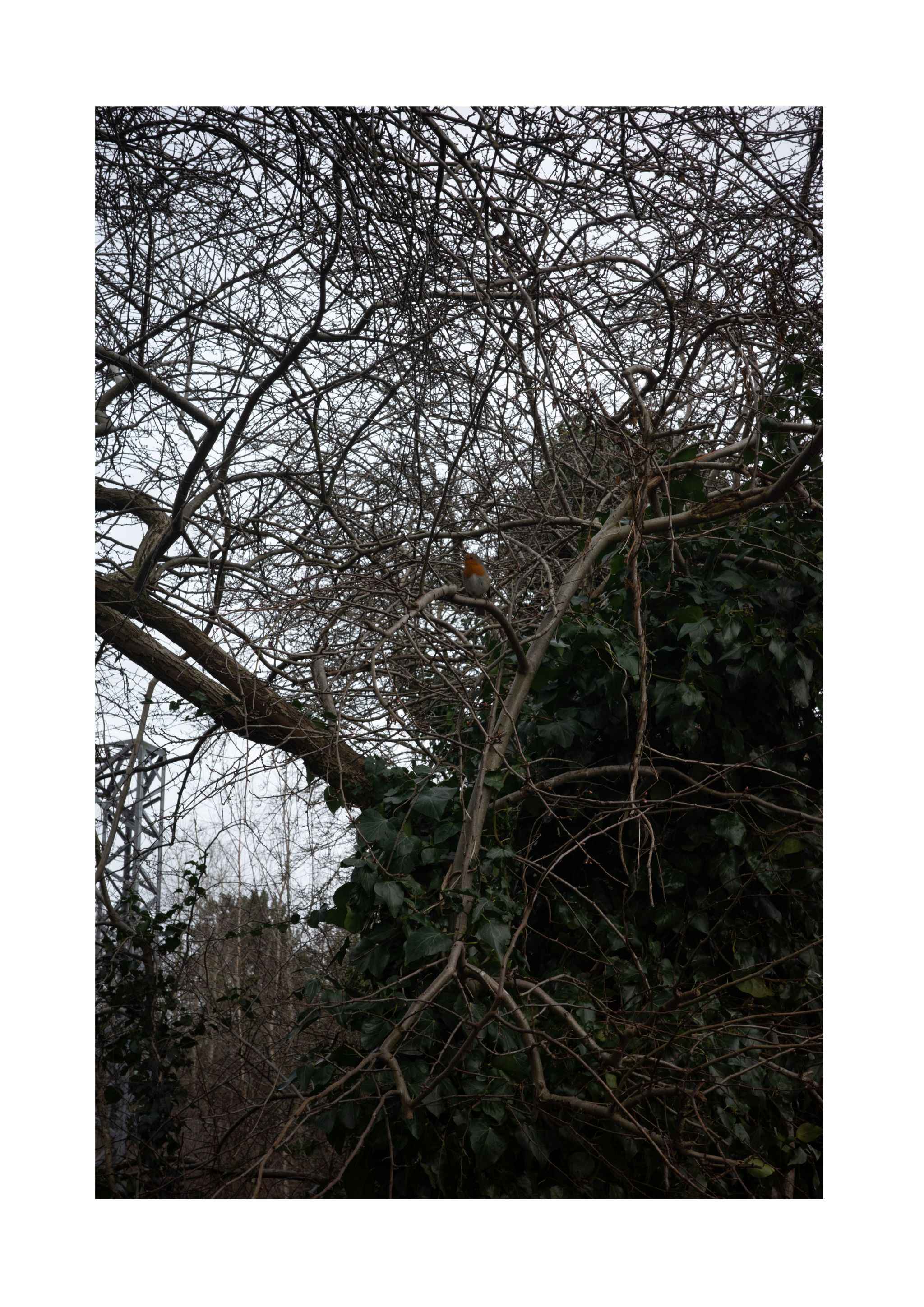
14.05.25
We started the garden in the spring of 2024, the spring after our move. When I say garden, I mean the back garden and the vegetable patch beyond the garden. Gardens take on new role’s as life moves. Initially, perhaps a contrived attempt to create a space already there. Preconceived ideas of what to grow, where and how. The garden, for me is like lots of other creative endeavours. You put things with other things, choosing arrangements and companions. The garden is made up of small choices. Photography is like this too. The garden is also a metaphor for life obviously. The birth, growth, death and decomposition to help nourish life beyond. Art can do this too. For me this is a spiritual process. One I can believe in. The garden has helped to create hope in times of uncertainty. It had provided an escape, nature, social interaction and more recently it has been a space to recover after a nasty injury. Even now, in our early years building our home, the garden has been the centre of life.
22.03.25
Photography is like Gardening. To plant something, is to anchor something in the ground. Putting something down. Creating and watching something grow from not much. Control, or an attempt at control in a personal perimeter separate from the disorder outside. The garden is an ordering. It stands for order. To order and reorder is like a sequence of images. To garden is to select, arrange, find companions, many parts working together as a whole, becoming something of its own, like the process of the photobook. Not the conductor of nature but perhaps an orchestra of a certain nature. We are nature though, we are not separate. I have been enjoying gardening lately.
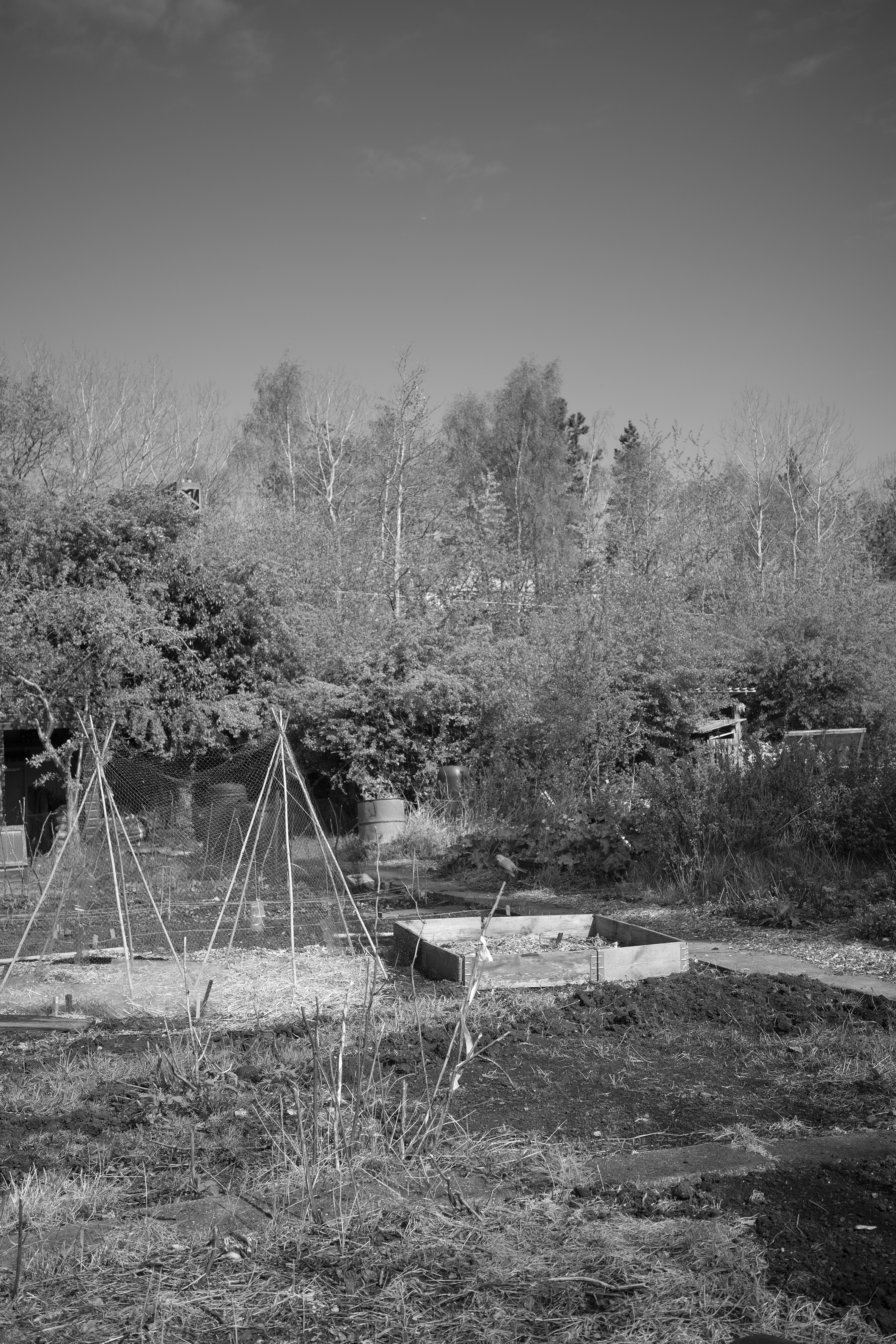
In spite of everything.
These are moments between the ubiquitous pictures, events or happenings. The birthdays, the football trophy photo. These are something different. They celebrate life in the continuum of time. A collision course with a felicitous, gift-giving chance, where my child becomes himself.
I use a small compact camera. No viewfinder and no barrier between me and the world. It’s a new way of photographing and one almost akin to seeing. The camera is more an extension of the body, discreet and not seen. I observe life unfolding before me as I press the shutter.
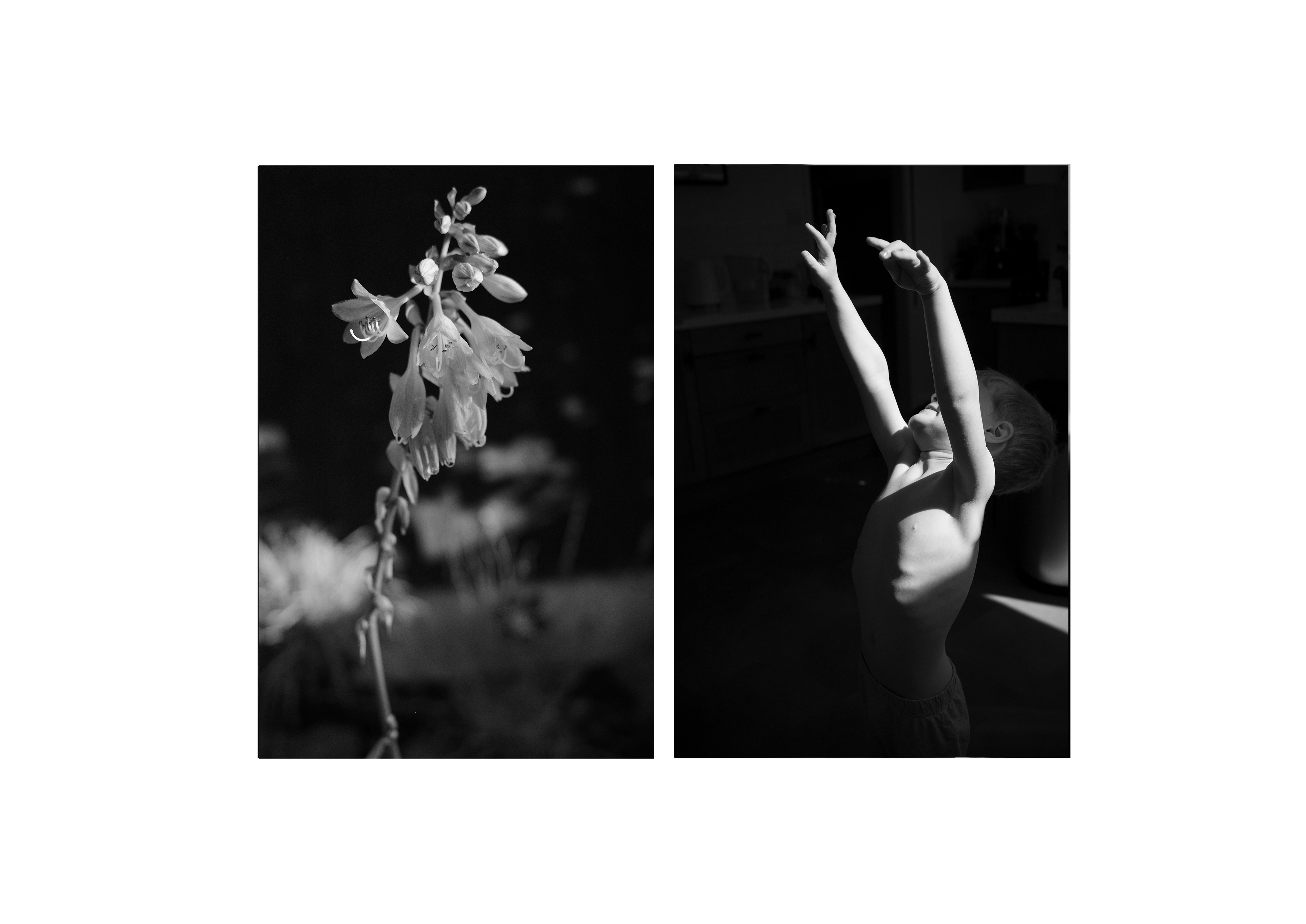
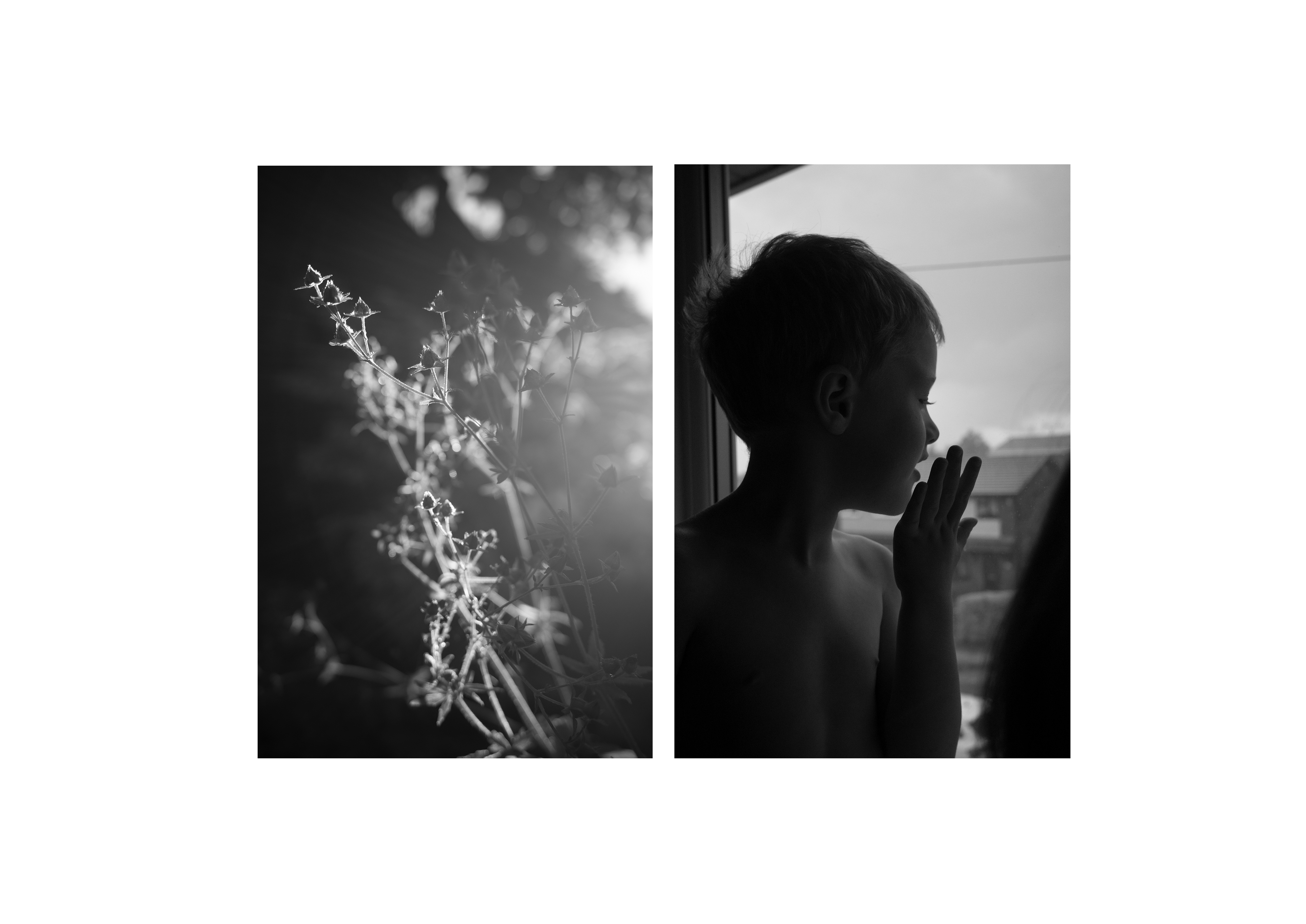
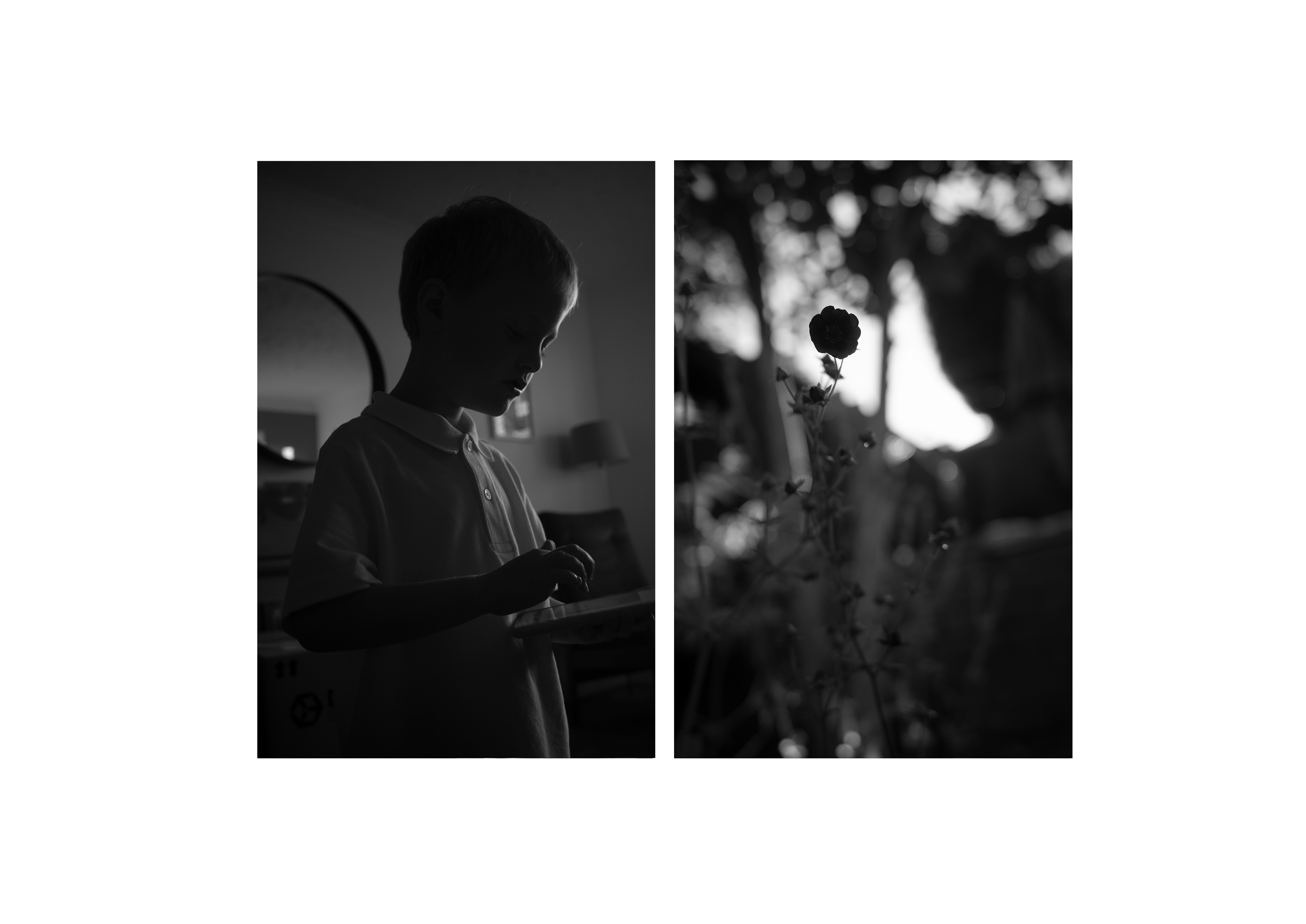
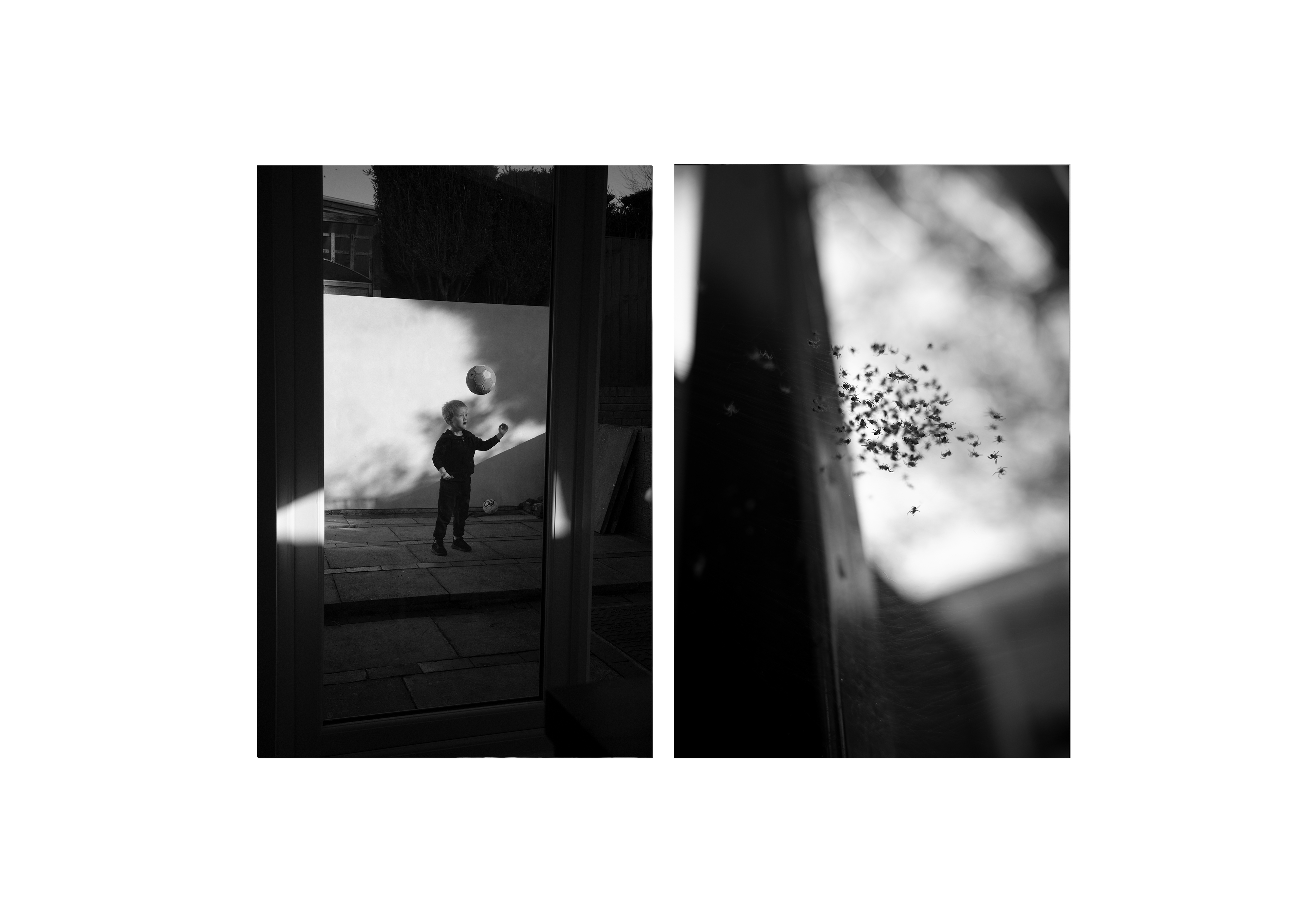
Home continuum, 2023.
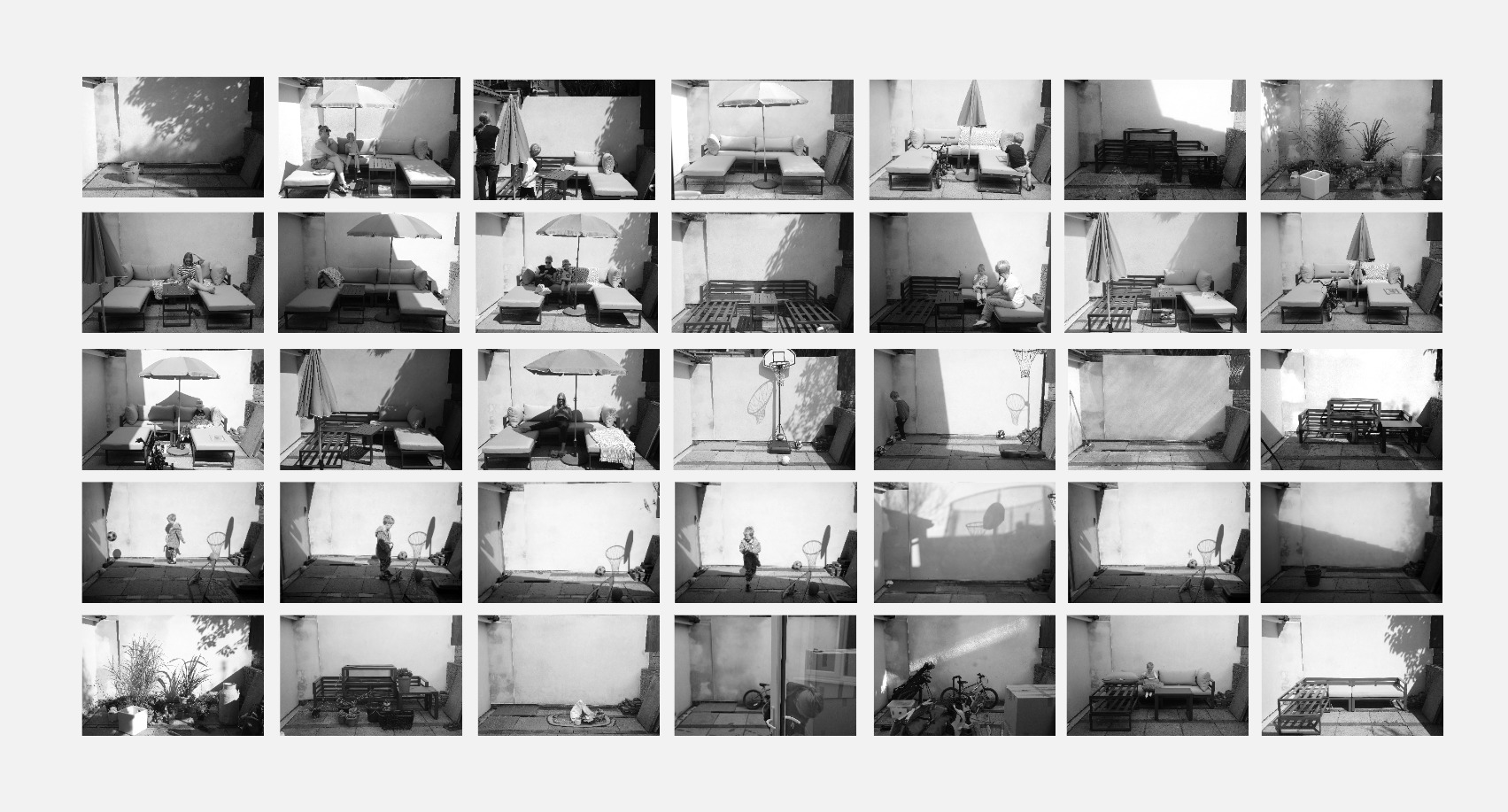
Can you hear what I hear? Can you see what I see? Can you feel what I feel?
Why do people do anything? Not sure but I’ve heard the Swiss don’t climb mountains. I’m not interested in mountains or that unreachable landscape that exists in dreams or over-produced TV programmes. I am interested in my own street, my own garden, the smaller things that make up the bigger things. There would be no bigger things without smaller things. I heard someone say once that if one thing matters then everything must. I agree with that sentiment. People are too busy worrying about the wider issues in the world, spouting mainstream politics when they don’t even know their own street, their own neighbour, their partner. I see beauty in ordinary things. The worth of the ordinary. We have lost the ability to connect to what we have. The simulated society is here and we are consumed with searching for anything but here. Photography is about looking at things, noticing things. Things I believe are worthy of attention. The camera is a tool for looking, an extension of the eye. The here and now. All we have is now. To photograph is to anchor the present.
The need to make something seems constant. I am from a city that made things and the connection of objects made from real factories from real jobs by real people. This is what makes a place. Coal once fired the chimneys of the infamous factories of a landscape now lost to jobs too small for people's souls. My grandparents found love at Wedgwood, where they worked most of their lives. It was there that they made things. At the end of a working day, they had something to show for their labour. They made things with their hands, real things that you could use, hold and look at; Pottery from the Potteries, the nickname for the city they were bound by family, past and present. Growing up, I had limited experience in this industry. Instead, I grew up amongst the relics in a ‘museum without walls’ as Jonathan Meades would put it. Walk through any one of the six towns that make up the conurbation of Stoke, and this sense of heritage and the weight of loss is palpable. My oldest brother got an apprentice role at Royal Doulton when he left school and that was as close as I have got to the Industry at which this city is renowned for. The Royal Doulton factory was demolished last summer to make way for housing. I photographed the remnants of the building, the front façade with the letters ROYAL DOULTON. I normally avoid clichés such as old buildings or anything related to abandonment but this was an important part of the place it was part of, Burslem, known as the Mother Town, which is one of the 6 towns. It was there, it provided hundreds of jobs, making the world renowned Doulton figures, once prestige now forgotten. I remember my Nan and Grandad's house being burgled for these figurines. People broke into homes to steal them. Doulton figures now sit in closed-down charity shop windows in towns that few frequent. To me, this sense of loss is sometimes overwhelming. I sometimes wonder what the older generation think about the current state of things and how this sense of loss impacts them. I have been told on numerous occasions about the good old days, where you could walk out of one job and the next morning walk into another. I have also been told on frequent occasions that “you’ve never had it so good” to which I laugh aloud.
 .
. Tuesday 2nd October 2024
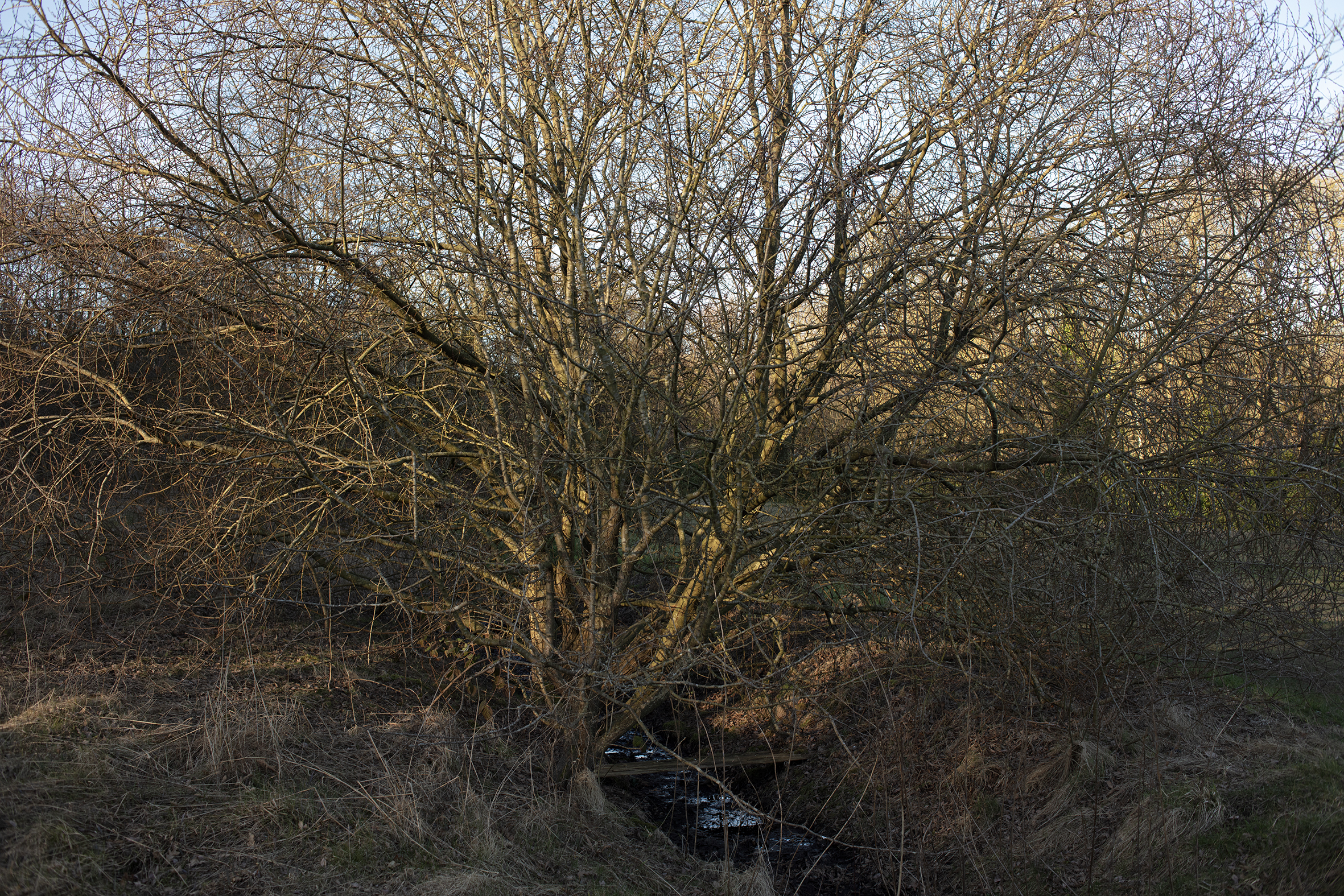
I went to the spoil heap to see the oak tree I planted a few months back now. A sapling from our back garden. I took it up in the back of the car. Dug a hole, breaking through the hard surface and placed it in the ground. It’s doing well. Surviving. Made my day. I downloaded the picture this app too to identify the types of flora of the heap. dog rose, Showy snowdrop. Turkey oak, Austrian pine, New York aster, scotch broom, and some English oak to name a few. Might look into the species of trees more and how they got there. Had ofsted in last week. A priority is how we are providing young people with skills to suit the local needs. It’s Got me thinking about the local landscape. Commerce. Institutions. Ha. You What ? I provide the knowledge of how to operate the machine, then process. The how and then the why. Whether it’s to sell a product that nobody needs or to explore a place that is worthy of acknowledgment. They learn how to self-direct and eventually realise meaningful outcomes. Meaningful to themselves first and foremost. Like an anchor in time. Be an individual. Be free. I teach people how to tell their own stories. Empowering themselves in the face of adversity. Places to go. To create. Away from the traps of substances. Betting. Pubs. Away from bet365. The course may or may not lead to jobs but empowerment. And when the platforms arrive. When the time comes their voice. Their stories will help with progress. And if they embrace it with ambition and curiosity they will be successful. It may not change the world. But it will change their world. The reason my book about my grandad is bought by someone oversees ….. the Trent etc is bought is because people want stories. Real stories. They can connect to it, even if they know nothing of the place or person. Connection is universal. Stories help bring us together and find commonalities. Stories build bridges. In terms of commerce. Jobs. Industry. Car washes. Warehouses. Metal traps planted on the edge of anything like an alien aircraft. Jobs too small for people’s souls.
In the future, we will probably see bet365 teaching maths lessons in our schools. Priority int it. Progress. A city built on betting as carol flies in and out over and above in her helicopter. It’s laughable.
I pride myself on promoting thinking about your connection to the place where you live. Promoting curiosity and discovery. With that will come knowledge, belonging and self discovery. Also I craft. Self-directed. Creating a path - That’s what photography can be. Walking and being. Looking, recording and reflecting. Making something from that. Being - Seeing in a society lost to screens.
We don’t know each other anymore. That is at the heart of my practice and my teaching. I still believe in the medium. I still think it could be at the heart of community cohesion and natural regeneration. Stories. Real stories from real places and people. I struggle to believe in the local providers. Why would I? I’m proof that institutions don’t care about what they preach. Proper art has become a bourgeois practice for the comfy. The decreasing opportunities and safety to create are a reality. My work should be taught in their classroom. It should be part of their curriculum / syllabus. They ignore it. Anyway, I wonder where these inspectors reside?
16.12.24
A Beautiful loneliness.
I went to see the Maurice Wade exhibition today in the Potteries museum. Extraordinary collection of work. A meticulous study of the local landscape. Streets, brooks, canals that I know so well. A proper artist. It was overwhelming to be honest. Proper emotional. Landscapes familiar to me. I spent an hour in there. Alone.
Got talking to the warder in there. He started. He asked if I was local. Mentioned that I was a photographer. We talked about the work. The way he handled the light and shadows especially on the water, the canals. He wondered whether he knew what he was recording was soon to disappear. I said that he would have been conscious of the importance of his records of the vanishing world before him. What would he have made if it now, I stated. How would he record the present state of things?

Dickens
Charles Dickens was an avid urban walker. He was so to speak, street-wise. He lived the street and his writing was a conduit for his experience, exploring the variety of characters from it. He very much through that people were a product of place and place a product of its occupiers. He said, “ it is one of my fancies, that even my idlest walks must always have its destination….on such an occasion, it is my habit to regard my walks as my beat, and myself as a higher sort of police-constable doing duty on the same”
I have often been asked the question when wandering through the streets. Are you police? I see on others the suspicion. I once intervened an obvious desperate lady breaking into a car window in a backstreet of Burslem in the early morning hour. I caught her with her hands through the broken window. I told her to leave before things got messy.
These are the experiences between the work. You become an almost higher sort of person of the street. A hunter gatherer wandering purposely with a basket of the mornings spectacles. The photographs are not the walk as of poets, but perhaps the fruits of the walk.
The streets are the repositories of history. A museum without walls.
The Lapidary shop, Burslem.
Paul O’Donell, photographer, Burslem.
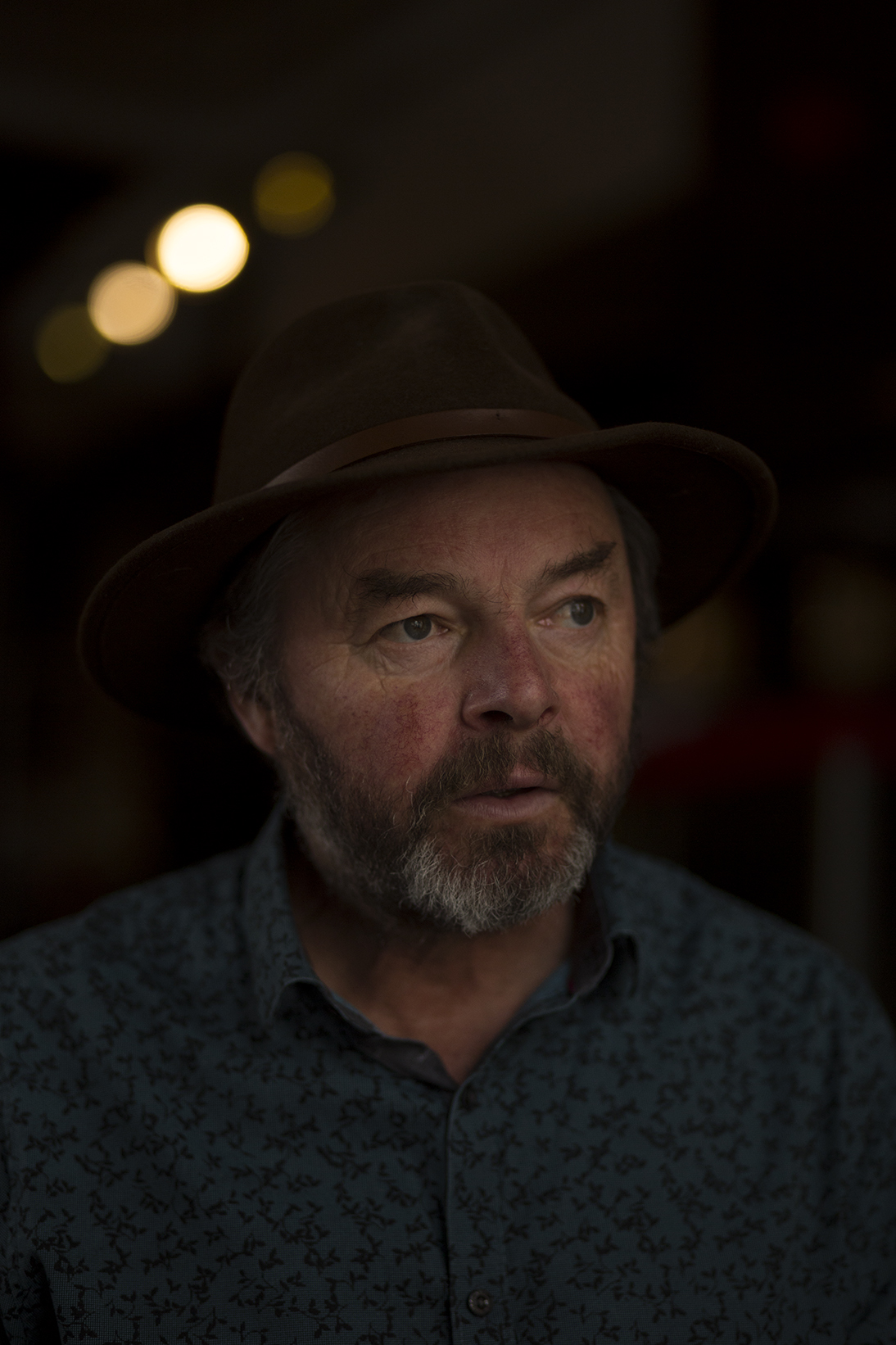
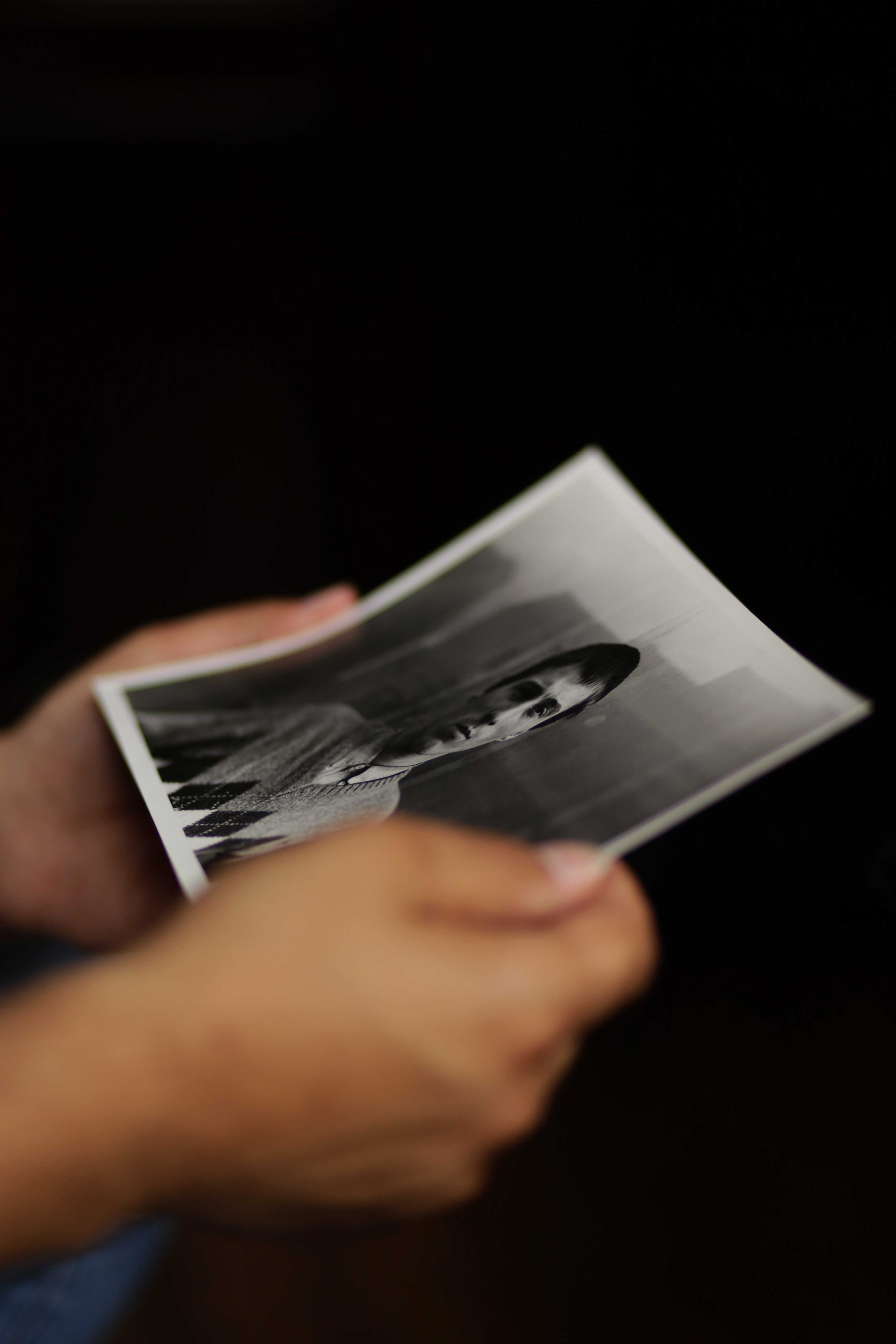
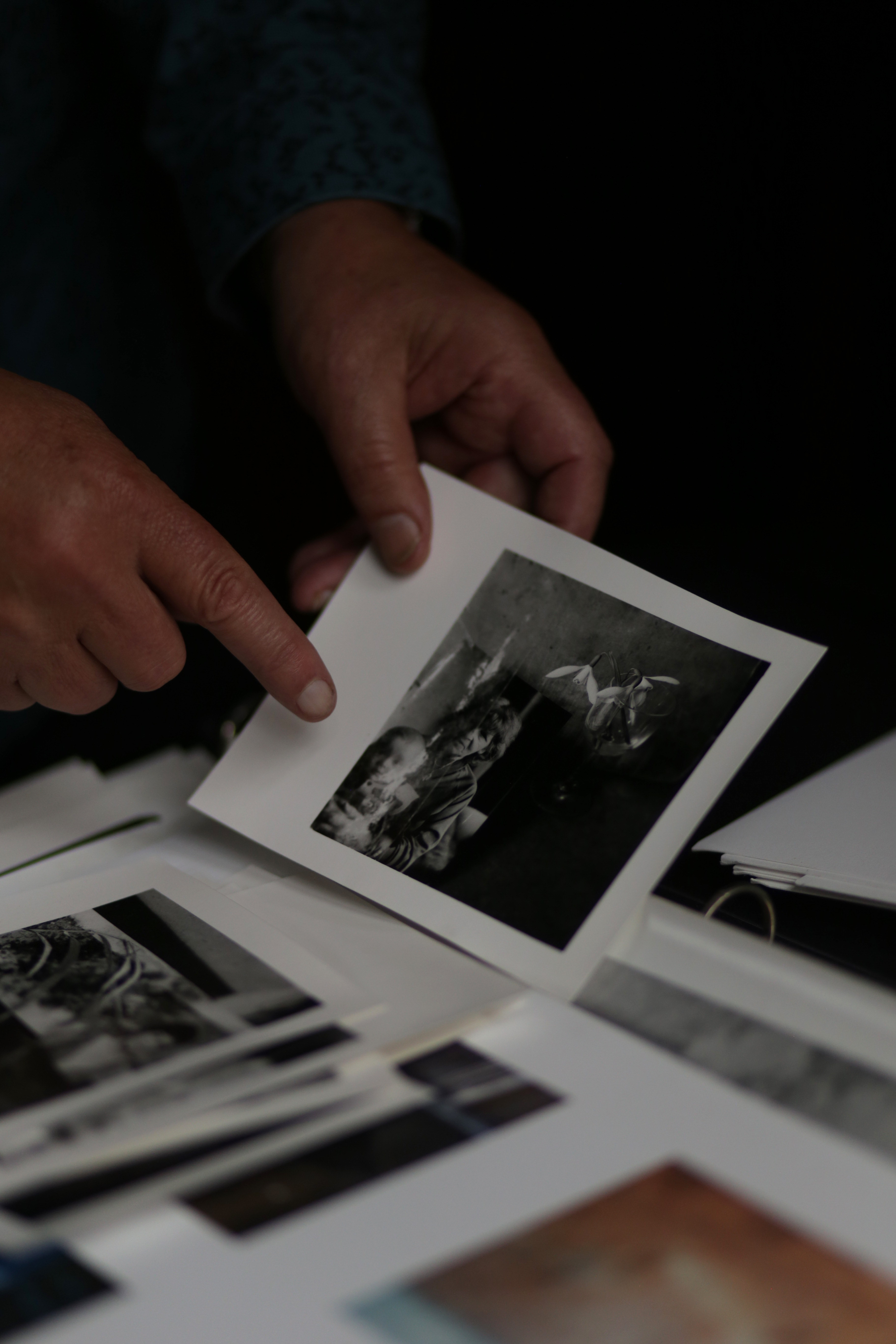
Billy’s nature & science homework
We went to the spoil heap, where nature & science collide like on the abandoned bricks of empty buildings once home to school swimming and learning. Science & art were once equal before the modern fallacies obstructed the thought of us and nature being one, where objective modes of knowledge are weighted in currency.
He we find Nature. A Sacred hill from a post- industrial landscape once home to real jobs, now regenerated almost independently by nature.
We parked up and Billy led the way. He climbed into a broken branch and made some photographs. On the hill, I showed him the oak sampling I planted from our garden last year. He photographed it and I photographed him photographing it. He noticed the moon in the clear blue sky and pointed his camera to it.
We walked through the path made from previous walks noticing signs of spring and the homeless. He asked why people were sleeping here and I said that’s a lesson for another time.
Billy suggested we go to the summit so we are closer to the sun and the moon. There, we could see nanny Karen’s house. We could see the city beneath us. He photographed the sun, moon and a bridge made from the remains of the wooden cross that sat over a trench. some mushrooms.
Billy said he will write about his experience and I explained what a spoil heap was and why it was here. He said it was one of his best adventures yet. Here, on his doorstep. Real nature. Free from signs and charges.
I hope his school learns that these are the places where art classes should be taught. Geography, history, PE and sociology too.
